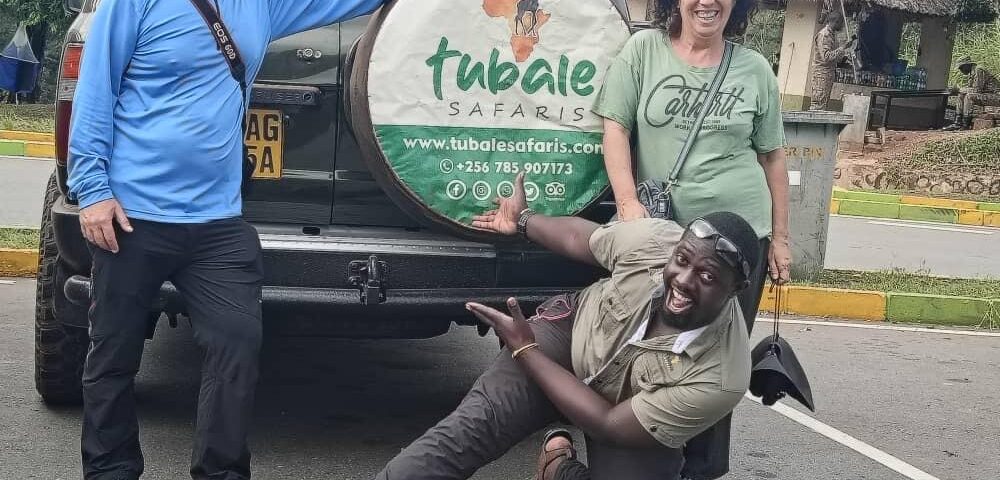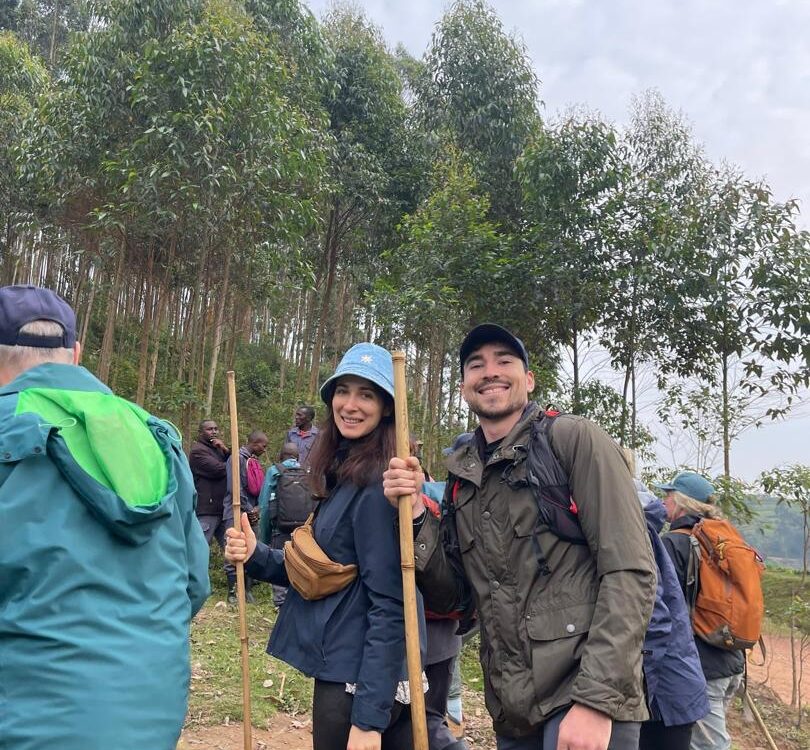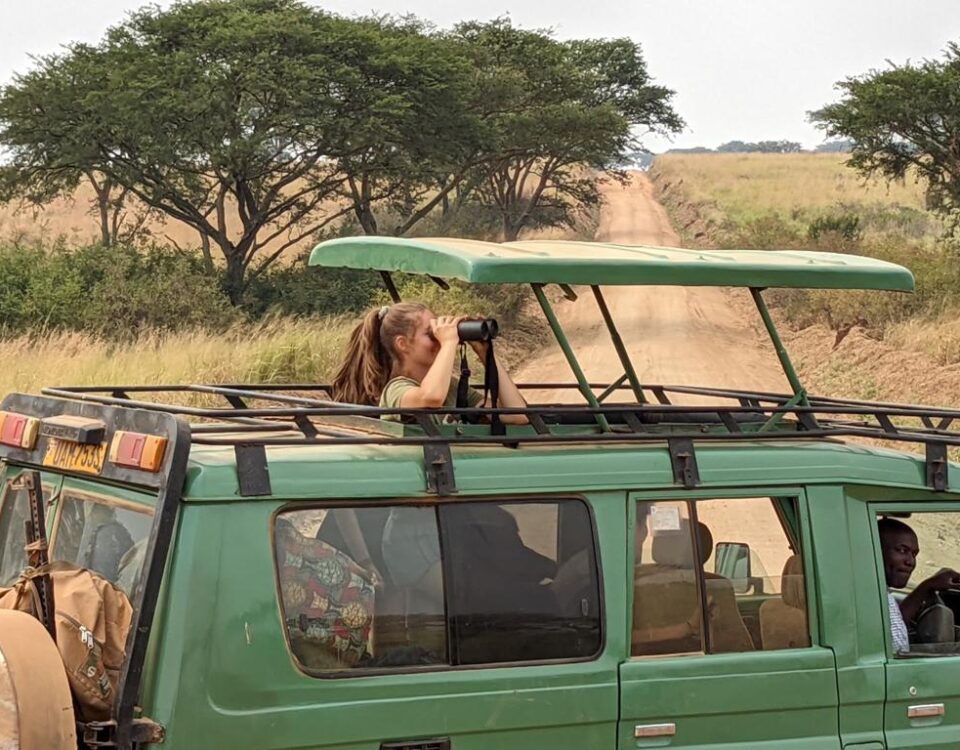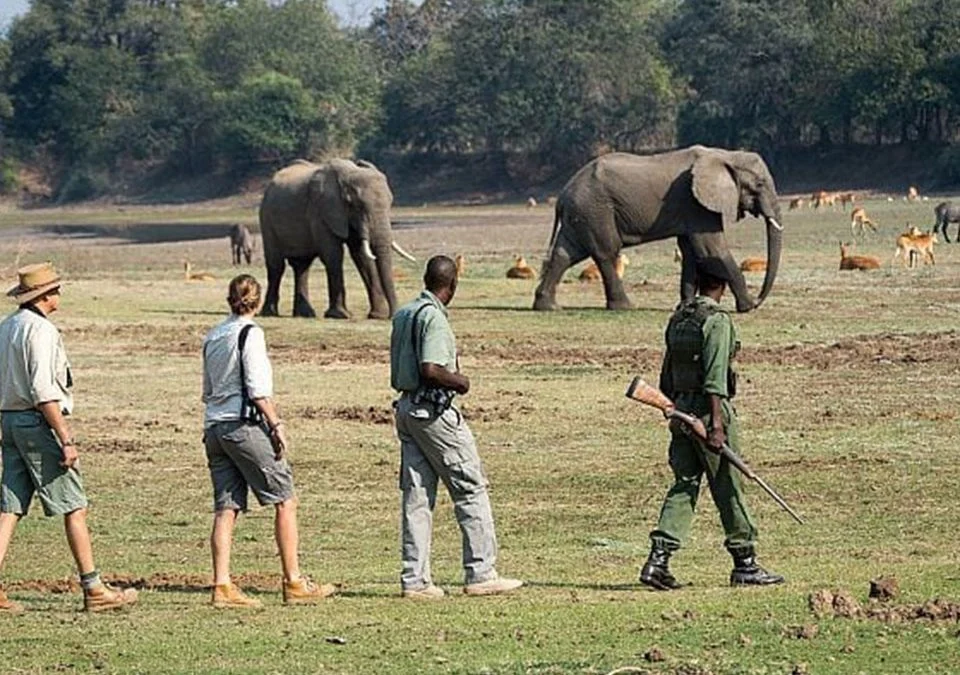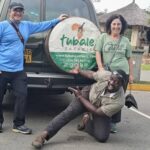
1-Day Uganda Gorilla Trekking Safari from Kigali City
September 21, 2024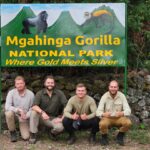
How Difficult is Gorilla Trekking in Uganda?
November 11, 2024Is Uganda Better Than Rwanda for Gorilla Trekking?
Is Uganda Better Than Rwanda for Gorilla Trekking? Gorilla trekking in East Africa has captivated the hearts of travelers, adventurers, and conservationists alike. This once-in-a-lifetime experience allows visitors to step into the natural habitat of the majestic mountain gorillas, an endangered species with fewer than 1,100 individuals remaining in the wild. The majority of these gorillas are concentrated in two key regions: the Bwindi Impenetrable National Park in Uganda and the Volcanoes National Park in Rwanda. Each country offers its own unique trekking experience, shaped by different landscapes, levels of accessibility, conservation efforts, and cultural nuances.
Uganda and Rwanda, though geographically close, provide contrasting experiences for gorilla trekking. While both countries strive to protect and preserve their precious gorilla populations, their trekking environments, costs, and logistics differ significantly. This article will provide an in-depth exploration of each destination, comparing Uganda and Rwanda on various criteria to help travelers determine which destination may best suit their preferences and expectations for an unforgettable gorilla trekking adventure.
Overview of Uganda and Rwanda as Gorilla Trekking Destinations
Uganda and Rwanda are known globally as premier gorilla trekking destinations. Uganda, often dubbed the “Pearl of Africa,” boasts lush, diverse landscapes and abundant wildlife, with Bwindi Impenetrable National Park as its crown jewel for gorilla trekking. Bwindi’s rugged terrain and thick foliage provide an authentic, untamed jungle experience, with multiple trekking regions to choose from, each offering a distinct journey into the lives of mountain gorillas.
Rwanda, on the other hand, has positioned itself as a luxury eco-tourism destination with a strong focus on conservation and community involvement. Gorilla trekking in Rwanda centers around Volcanoes National Park, a scenic and well-organized park offering a slightly different setting due to its volcanic landscape. With higher permit fees, Rwanda has taken an exclusive approach, aiming to attract high-end travelers while using funds to further conservation and community development. This strategy has allowed Rwanda to build world-class trekking infrastructure while maintaining its commitment to protecting its gorilla population.
Gorilla Population and Habitats in Uganda and Rwanda
Uganda and Rwanda are home to significant populations of mountain gorillas, yet their habitats and gorilla group dynamics offer contrasting experiences. Uganda’s Bwindi Impenetrable National Park hosts about half of the world’s remaining mountain gorillas, with over 450 individuals spread across 20 habituated gorilla families. Bwindi’s dense, jungle-like vegetation provides an authentic and sometimes challenging trekking environment. This biodiversity hotspot is also home to countless other species, including birds, primates, and diverse flora, enriching the experience for wildlife enthusiasts.
In Rwanda, Volcanoes National Park harbors approximately 300 gorillas in 12 habituated families. The park’s open, bamboo-laden forests and volcanic slopes give a different trekking feel compared to Bwindi’s dense undergrowth. Rwanda’s gorilla groups are often easier to locate due to the open terrain, and trekkers in Volcanoes National Park typically enjoy clearer sightings of gorillas against a scenic volcanic backdrop. The varied habitats in each country not only affect trekking conditions but also influence gorilla behavior and social dynamics, with Uganda’s groups often more dispersed due to the dense forest environment.
Comparing Trekking Experiences: Uganda vs. Rwanda
When it comes to the overall trekking experience, Uganda and Rwanda offer distinctive encounters with mountain gorillas. Uganda’s Bwindi Impenetrable National Park is known for its raw, immersive jungle setting, giving trekkers a sense of adventure as they navigate thick vegetation and steep, sometimes muddy, trails. Treks in Bwindi can vary greatly in duration, from as little as one hour to several hours depending on gorilla locations, adding an element of unpredictability. For many, this makes the experience feel more authentic and thrilling, but it can also be more physically demanding.
Rwanda’s Volcanoes National Park provides a more curated trekking experience. Rwanda has invested heavily in its eco-tourism infrastructure, ensuring organized and accessible trails that cater to a wider range of trekkers, including those seeking a more comfortable experience. Here, the open bamboo forests and gentle slopes can make for a relatively easier trek, allowing travelers to focus more on observing gorillas and less on challenging terrain. Additionally, Rwanda’s shorter trekking times make it ideal for visitors with tight schedules or those preferring a smoother journey. Both experiences are rewarding, but Uganda appeals more to adventure seekers, while Rwanda’s approach attracts travelers seeking a structured and luxurious experience.
Accessibility and Infrastructure
Accessibility and infrastructure are critical considerations when planning a gorilla trekking adventure. In Uganda, Bwindi Impenetrable National Park is a roughly 8 to 10-hour drive from Entebbe International Airport, Uganda’s main international gateway. Although the drive offers scenic views and cultural encounters, it can be lengthy and exhausting for some travelers. Alternatively, visitors can opt for domestic flights to Kihihi or Kisoro airstrips, which significantly reduce travel time to Bwindi. However, road conditions near Bwindi are still rugged, and the park’s remote nature requires a certain level of travel endurance.
Rwanda’s Volcanoes National Park is notably more accessible, located just a 2-hour drive from Kigali International Airport. This proximity to Kigali, Rwanda’s capital, makes it possible to trek gorillas on a tight schedule, even with a single overnight stay. The well-paved roads and developed infrastructure around Volcanoes National Park also make Rwanda a more convenient option, particularly for visitors who prioritize ease of travel and a streamlined itinerary. Rwanda’s accessible infrastructure has contributed to its popularity among high-end travelers, as the country has invested in luxury lodges and well-maintained facilities to cater to their needs.
Permit Costs and Availability
Gorilla trekking permits are a major factor in choosing between Uganda and Rwanda, as they represent a substantial portion of the overall trip cost. In Uganda, a gorilla trekking permit costs USD 700 per person, significantly more affordable than Rwanda’s permit price of USD 1,500 per person. Uganda also offers discounted rates for East African nationals and expatriates, making it a more budget-friendly option for both international and regional tourists.
Rwanda, however, has positioned itself as a premium gorilla trekking destination by setting a high permit price. The increased cost supports conservation initiatives, local community projects, and luxury infrastructure, aligning with Rwanda’s vision of exclusive eco-tourism. This pricing strategy has helped limit the number of trekkers, reducing the environmental impact on gorilla habitats and offering visitors a more private experience. However, for budget-conscious travelers or those planning group trips, Uganda’s permit structure is more accessible and may allow for additional activities within the same budget.
Terrain and Difficulty Levels
The terrain and difficulty levels of gorilla trekking differ considerably between Uganda and Rwanda, influenced by each park’s unique topography. Uganda’s Bwindi Impenetrable National Park lives up to its name, with a challenging, forested landscape that demands physical stamina. Trekkers often navigate steep hills, thick undergrowth, and muddy paths, particularly during the rainy season. The dense vegetation means that sightings may be partially obscured by foliage, adding to the sense of adventure but also demanding patience and agility from trekkers.
In contrast, Rwanda’s Volcanoes National Park features open, bamboo-dominated forests on relatively gentler slopes, making for an easier trek overall. The trails are more established, and visibility of gorilla groups is generally better, allowing for close observation of these majestic animals in their natural habitat. Rwanda’s terrain is suitable for visitors of varying fitness levels, whereas Uganda’s rugged trails may be more suitable for physically prepared travelers seeking a rewarding challenge. Both countries, however, provide porters who can assist with carrying bags or offering support on difficult trails, making the trek manageable for a wider range of adventurers.
Best Time of Year for Gorilla Trekking
Understanding the seasonal variations in Uganda and Rwanda can greatly enhance the gorilla trekking experience. Both countries experience a tropical climate, with distinct dry and rainy seasons that influence trekking conditions, gorilla movement, and visibility.
Uganda has two main dry seasons, from December to February and from June to August, which are generally considered the best times for gorilla trekking in Bwindi Impenetrable National Park. During these periods, trails are drier, making them less challenging to navigate, and the gorillas tend to be more active and visible. The dry seasons also align with peak tourist seasons, meaning travelers can expect larger crowds and a more vibrant atmosphere at accommodations and trekking sites. The rainy seasons, from March to May and from September to November, bring wetter, muddier trails, which can be challenging for some trekkers. However, these months offer a quieter trekking experience and discounted accommodation rates, and gorilla sightings are still common as the gorillas remain in their territories.
Rwanda also experiences two dry seasons, which correspond to Uganda’s schedule, making June to September and December to February the most popular months for trekking in Volcanoes National Park. The relatively mild temperatures and open bamboo forests in Rwanda make trekking feasible year-round, but during the dry seasons, trails are more accessible, and visibility is enhanced. In the rainy seasons, Rwanda’s trails remain manageable due to established paths, but the lush green scenery becomes even more striking. For those seeking fewer crowds and don’t mind a little rain, the rainy seasons can offer a quieter, intimate experience.
Both countries offer fantastic trekking experiences year-round, but choosing the right season depends on each traveler’s preference for trail conditions, crowd levels, and budget considerations. The dry seasons are ideal for most travelers, while the rainy seasons appeal to those seeking a quieter, less conventional experience.
Supporting Conservation and Local Communities
One of the primary motivations for both Uganda and Rwanda in offering gorilla trekking experiences is to generate revenue for conservation and support local communities. By investing a portion of the permit fees into conservation efforts and community projects, both countries have successfully used tourism to protect gorillas and improve the lives of people living in gorilla habitats.
In Uganda, a significant portion of gorilla permit revenue supports conservation programs run by the Uganda Wildlife Authority (UWA). This includes funding anti-poaching patrols, ranger training, and habitat preservation. Additionally, Uganda has launched initiatives to help local communities benefit directly from tourism. For example, the Revenue Sharing Program distributes 20% of gorilla permit revenue to surrounding communities, funding infrastructure projects, education, and health services. This incentivizes local people to protect gorillas and reduces potential human-wildlife conflict. Cultural tourism initiatives, like the Batwa Trail, allow communities to share their heritage with visitors, creating additional income streams that encourage preservation of cultural and natural resources.
Rwanda takes a similar approach, with a higher emphasis on eco-tourism and community involvement. The Rwandan government allocates 10% of the revenue from gorilla permits to local communities through projects that include school construction, health clinics, and water facilities. This has fostered a sense of stewardship among Rwandan communities, as they see tangible benefits from gorilla conservation. The government has also established guidelines to limit the environmental impact of tourism and ensure that gorilla trekking remains sustainable. Rwanda’s approach to conservation is particularly notable for its focus on luxury eco-tourism, targeting fewer visitors at higher prices to minimize environmental impact while maximizing economic returns.
Both Uganda and Rwanda’s community programs have contributed to the steady growth of gorilla populations in recent years. By choosing to go gorilla trekking in either country, travelers are actively participating in conservation efforts that benefit both wildlife and local people.
Alternative Activities in Each Country
While gorilla trekking is the highlight of any visit to Uganda or Rwanda, both countries offer an array of alternative activities that complement the trekking experience and make for a well-rounded adventure. Adding these experiences to a gorilla trekking itinerary can deepen the traveler’s understanding of each country’s natural beauty, culture, and wildlife.
In Uganda, adventurers can explore Kibale Forest National Park, known for its incredible chimpanzee tracking opportunities. This park, often referred to as the “primate capital of the world,” is home to several primate species, making it ideal for wildlife lovers. Queen Elizabeth National Park is another must-visit destination, offering classic African safaris with lions, elephants, hippos, and more. The Kazinga Channel in this park is a scenic waterway where visitors can take boat cruises to spot hippos, crocodiles, and countless bird species. For adrenaline seekers, Jinja, the source of the Nile, offers white-water rafting, bungee jumping, and kayaking, providing a thrilling contrast to the serene gorilla trekking experience. Rwenzori Mountains National Park, home to Uganda’s tallest mountains, offers challenging hikes and stunning scenery for trekking enthusiasts.
Rwanda, while smaller in size, also has a rich selection of alternative activities. Golden monkey tracking in Volcanoes National Park is a popular choice, allowing visitors to see another primate species in Rwanda’s mountainous forests. For a cultural experience, a visit to the Iby’Iwacu Cultural Village provides insights into traditional Rwandan lifestyles, dance, and crafts. Lake Kivu, one of Africa’s Great Lakes, offers relaxation along its shores with opportunities for swimming, kayaking, and visiting local fishing communities. Rwanda also has the Kigali Genocide Memorial, a deeply moving site that commemorates the victims of the 1994 genocide and provides a historical perspective on the country’s resilience and recovery. The Nyungwe Forest National Park, with its chimpanzee trekking and scenic canopy walk, is a lesser-known gem that should not be missed by nature enthusiasts.
By incorporating these alternative activities into a gorilla trekking itinerary, travelers can experience the diverse offerings of both Uganda and Rwanda, creating memories beyond gorilla encounters.
Which is Safer? Uganda or Rwanda for Gorilla Trekking?
Safety is a paramount concern for any traveler, and both Uganda and Rwanda have taken extensive measures to ensure the safety of visitors. Gorilla trekking takes place in remote areas, yet both countries have invested in infrastructure, security personnel, and protocols that prioritize visitor safety.
Uganda has steadily improved its safety record over the years, with stable conditions in its major parks, including Bwindi Impenetrable National Park. The Uganda Wildlife Authority (UWA) operates an organized system for gorilla trekking, with trained rangers who guide tourists and maintain safety protocols. In the event of a medical emergency, evacuation services are available. Additionally, the UWA rangers carry out regular patrols to prevent poaching and to keep trails secure. Uganda has experienced isolated security incidents in the past, but the country has since worked closely with regional and international bodies to enhance security measures in its tourist areas, making gorilla trekking safe and enjoyable.
Rwanda is widely regarded as one of Africa’s safest countries, with a low crime rate and a highly organized tourism infrastructure. The Rwandan government has invested heavily in making Volcanoes National Park a secure and appealing destination, and armed rangers accompany all gorilla trekking groups. Rwanda’s stability, clean and organized cities, and commitment to maintaining a safe environment for tourists have helped establish its reputation as a premier travel destination. The country has strict policies in place for gorilla trekking to ensure that both visitors and wildlife remain safe, contributing to a sense of security for trekkers.
For travelers concerned about safety, both Uganda and Rwanda are viable options. However, Rwanda’s strong emphasis on security and visitor safety makes it particularly appealing to risk-averse travelers or first-time visitors to the region. Both countries work diligently to protect visitors and wildlife, so safety concerns should not deter travelers from experiencing this extraordinary adventure.
Unique Aspects of Gorilla Trekking in Uganda
Gorilla trekking in Uganda offers distinct characteristics that make it an exceptional choice for many adventurers. Bwindi Impenetrable National Park’s vast, untouched rainforest environment creates a challenging yet rewarding trek that brings visitors closer to nature. The rugged terrain and thick vegetation enhance the feeling of being in a truly wild place, making each trek feel like a real expedition. Uganda’s multiple gorilla trekking regions, including Buhoma, Ruhija, Rushaga, and Nkuringo, provide a variety of trekking experiences within Bwindi. Each region has its own unique gorilla families, trail characteristics, and scenic highlights, allowing travelers to select a location that aligns with their interests and fitness levels.
Uganda also offers the unique opportunity to combine gorilla trekking with other wildlife adventures. For example, travelers can create an itinerary that includes chimpanzee tracking in Kibale Forest or game drives in Queen Elizabeth National Park, creating a comprehensive Ugandan safari. This flexibility in itinerary planning makes Uganda an excellent choice for travelers seeking diverse experiences within one country. Additionally, Uganda’s permit pricing is more accessible than Rwanda’s, enabling budget-conscious travelers to experience gorilla trekking without compromising quality. The combination of a budget-friendly permit, diverse trekking areas, and the chance to explore multiple national parks gives Uganda a unique edge, particularly for those seeking adventure and variety.
Unique Aspects of Gorilla Trekking in Rwanda
Rwanda’s gorilla trekking experience offers a distinct set of characteristics, setting it apart from Uganda. The core of Rwanda’s gorilla trekking lies in Volcanoes National Park, which sits in a scenic, accessible area close to the capital city, Kigali. This proximity allows for shorter travel times, making it possible for travelers to reach the park within a few hours of arrival, an ideal option for those on tight schedules or those looking for a quick yet unforgettable adventure.
Volcanoes National Park’s bamboo forests and mountainous terrain make gorilla trekking here both unique and visually captivating. The park’s gorilla trekking experience is structured to appeal to a range of travelers, including those looking for a premium, eco-friendly experience. The trails in Rwanda tend to be well-managed, with designated routes that provide a relatively easier trek for some visitors compared to Bwindi’s dense forest. Furthermore, Rwanda has embraced luxury tourism, and many of its lodges and accommodations offer upscale amenities, from gourmet dining to spa services, creating a more comfortable and high-end experience.
One particularly unique aspect of Rwanda’s gorilla trekking is the availability of the Dian Fossey Museum and Research Center, a tribute to the renowned primatologist who dedicated her life to the study and protection of mountain gorillas in the region. Many visitors take the opportunity to hike to the site of her research center and burial place, gaining a deeper understanding of the history and ongoing conservation efforts in the region. For travelers seeking an exclusive, accessible, and culturally enriched gorilla trekking experience, Rwanda’s Volcanoes National Park is an ideal choice.
Pros and Cons of Gorilla Trekking in Uganda
Uganda’s gorilla trekking offers an adventurous, immersive experience, but it also has its pros and cons that travelers should consider.
Pros:
- Affordable Permits: Uganda’s gorilla trekking permits are more budget-friendly than Rwanda’s, costing around $700, making it an appealing option for those looking to enjoy gorilla trekking without a high expense.
- Diverse Landscapes: Bwindi Impenetrable National Park’s dense rainforest setting provides an authentic wilderness experience that gives travelers a sense of exploration and adventure.
- Multiple Trekking Regions: Uganda offers gorilla trekking across different regions in Bwindi and Mgahinga, allowing for a variety of options in terms of difficulty and scenery.
- Combination with Other Wildlife Experiences: Uganda’s national parks provide ample opportunities to see other wildlife species, such as lions, elephants, and chimpanzees, which enhances the safari experience.
Cons:
- More Challenging Treks: The rugged, often muddy terrain in Bwindi can make treks more physically demanding, which may be a drawback for travelers seeking an easier experience.
- Longer Travel Times: Reaching Bwindi from Uganda’s capital, Kampala, can take 8-10 hours by road, which requires significant travel time. Alternatively, travelers can take a chartered flight, though it comes at a higher cost.
- Less Developed Tourism Infrastructure: While Uganda offers great trekking experiences, its infrastructure is generally less developed than Rwanda’s, particularly in terms of luxury accommodations and roads, which might affect the overall experience for some travelers.
Uganda’s gorilla trekking offers excellent value and an adventurous, wild experience, but travelers should prepare for more challenging hikes and longer travel times. This destination is ideal for those seeking a more rugged, budget-friendly adventure.
Pros and Cons of Gorilla Trekking in Rwanda
Gorilla trekking in Rwanda has its own strengths and challenges, shaped by the country’s emphasis on conservation, luxury, and accessibility.
Pros:
- Ease of Access: The short travel distance from Kigali to Volcanoes National Park (only a 2-3 hour drive) makes gorilla trekking easily accessible, even for travelers on a tight schedule.
- High-Quality Tourism Infrastructure: Rwanda has invested heavily in its tourism sector, offering high-end lodges, hotels, and services, which cater to luxury travelers and ensure comfort throughout the experience.
- Well-Maintained Trails: The trails in Volcanoes National Park are generally easier to navigate, making Rwanda an excellent choice for travelers of various fitness levels.
- Eco-Tourism and Conservation Focus: Rwanda is known for its commitment to sustainable tourism, making it an appealing destination for travelers who want to support conservation efforts while minimizing their environmental footprint.
Cons:
- Higher Permit Costs: Rwanda’s gorilla trekking permits cost $1,500, which may be prohibitive for budget-conscious travelers.
- Limited Gorilla Trekking Locations: Unlike Uganda, which has several trekking regions, Rwanda offers only one gorilla trekking site in Volcanoes National Park, which could limit variety.
- Shorter Trekking Duration: Due to the easier trails and smaller park size, some treks in Rwanda may be shorter, providing less of a rugged adventure experience for thrill-seeking travelers.
Rwanda’s gorilla trekking appeals to those looking for luxury, conservation-focused travel with easy access, though the higher permit costs and limited trekking locations may be a drawback for some travelers.
Cultural Experiences to Complement Gorilla Trekking
Both Uganda and Rwanda offer rich cultural experiences that allow travelers to connect with local communities and gain a deeper understanding of the region’s heritage. These experiences can significantly enrich a gorilla trekking trip, offering insight into local customs, traditional practices, and histories.
In Uganda, the Batwa Trail experience in Bwindi Impenetrable National Park allows visitors to interact with the Batwa people, one of the indigenous groups in the region. The Batwa, also known as the “keepers of the forest,” have a rich history and culture deeply intertwined with Bwindi. Guided tours led by Batwa elders introduce travelers to traditional hunting techniques, medicinal plant knowledge, and cultural practices. This experience provides not only an educational opportunity but also a way to support the community, as a portion of tour proceeds directly benefits the Batwa people.
Uganda also has diverse cultural sites and festivals, such as the Ndere Cultural Center near Kampala, which showcases traditional Ugandan dance, music, and storytelling. These cultural experiences add a meaningful dimension to any wildlife safari, helping visitors appreciate the country’s multifaceted heritage.
In Rwanda, the Iby’Iwacu Cultural Village near Volcanoes National Park offers an immersive experience into the daily lives of local communities. Visitors have the chance to try their hand at drumming, cooking, and crafting, and to participate in traditional Rwandan dances. This village visit is especially impactful, as many of the residents are former poachers who now advocate for wildlife conservation, making it an inspiring example of Rwanda’s commitment to change through community engagement.
Additionally, the Kigali Genocide Memorial is a profound cultural and historical site that helps visitors understand the country’s tragic past and the resilience of its people. This memorial provides a solemn reminder of Rwanda’s journey and showcases the progress the country has made toward peace and reconciliation. Together, these cultural experiences offer a well-rounded perspective on Rwanda’s history, culture, and commitment to conservation.
Comparative Wildlife Experiences Beyond Gorillas
While gorilla trekking is a primary attraction, both Uganda and Rwanda offer extensive wildlife experiences that enrich any visit. Exploring other species and ecosystems can add another level of enjoyment and diversity to a traveler’s itinerary.
In Uganda, wildlife enthusiasts have access to a vast range of parks and reserves, each teeming with different animals. Queen Elizabeth National Park is known for its tree-climbing lions, large elephant herds, and hippo-filled waterways, making it one of the best places in Uganda for classic African safari experiences. The Kazinga Channel in this park provides excellent boat safaris, where visitors can observe hippos, crocodiles, and a variety of birds. Kidepo Valley National Park, often referred to as Uganda’s “best-kept secret,” offers a remote and unspoiled safari experience with spectacular landscapes and animals like cheetahs, giraffes, and buffaloes.
Uganda is also home to Kibale National Park, which boasts one of the highest primate densities in Africa and offers remarkable chimpanzee trekking experiences. By combining gorilla trekking with visits to these parks, travelers can witness the diverse wildlife and ecosystems Uganda has to offer.
Rwanda, though smaller, also provides unique wildlife experiences. Akagera National Park, located along the country’s eastern border, offers a classic Big Five safari experience. This park’s conservation success story includes the recent reintroduction of lions and rhinos, making Rwanda one of the few places where travelers can encounter lions, elephants, rhinos, leopards, and buffalo. The park’s picturesque landscape of savannah, lakes, and marshland is home to numerous antelope species, giraffes, and hippos, providing a varied and scenic wildlife experience.
Additionally, Nyungwe Forest National Park in Rwanda is an exceptional destination for primate enthusiasts. The park is home to chimpanzees, colobus monkeys, and many other species of primates, as well as a vast array of bird species, making it a paradise for birdwatchers and nature lovers. The canopy walk in Nyungwe offers a unique perspective of the rainforest and adds a thrilling experience to the trek. Together, these parks offer travelers to Rwanda a chance to explore diverse ecosystems and experience a range of wildlife beyond gorillas.

